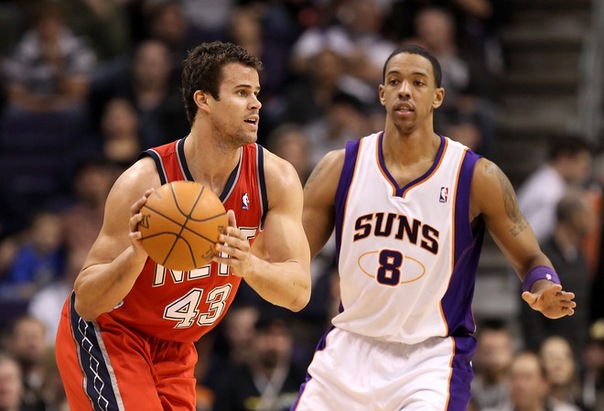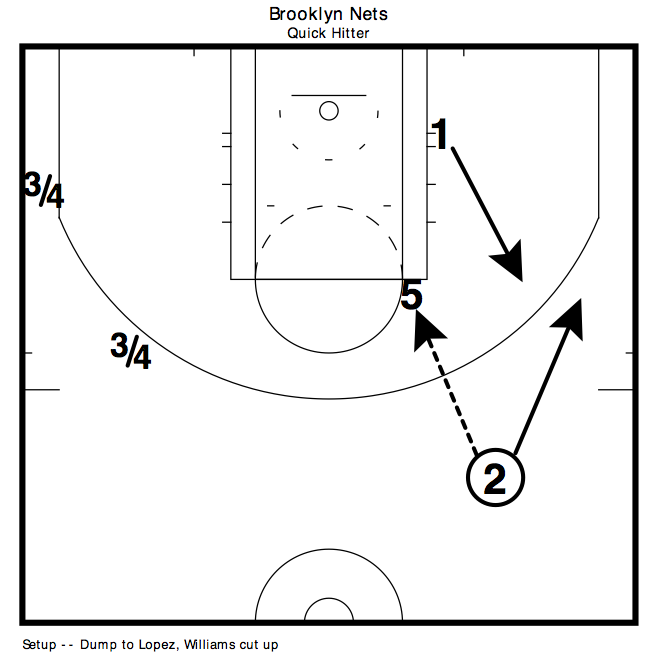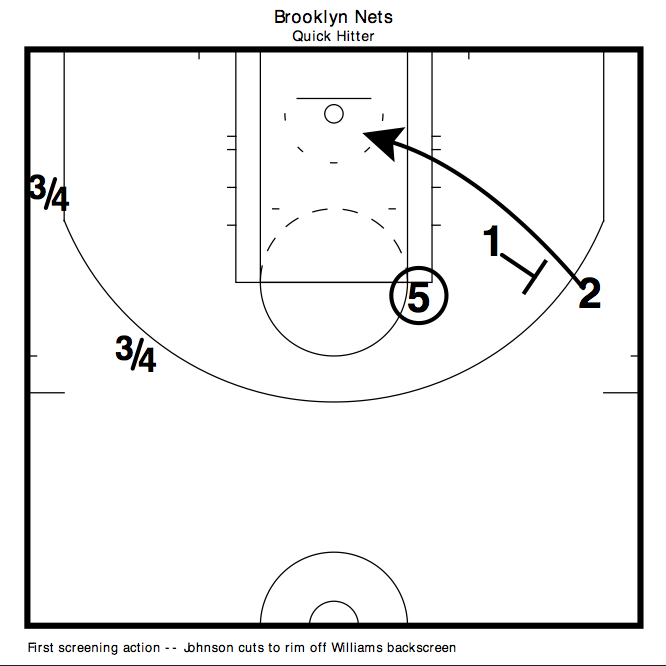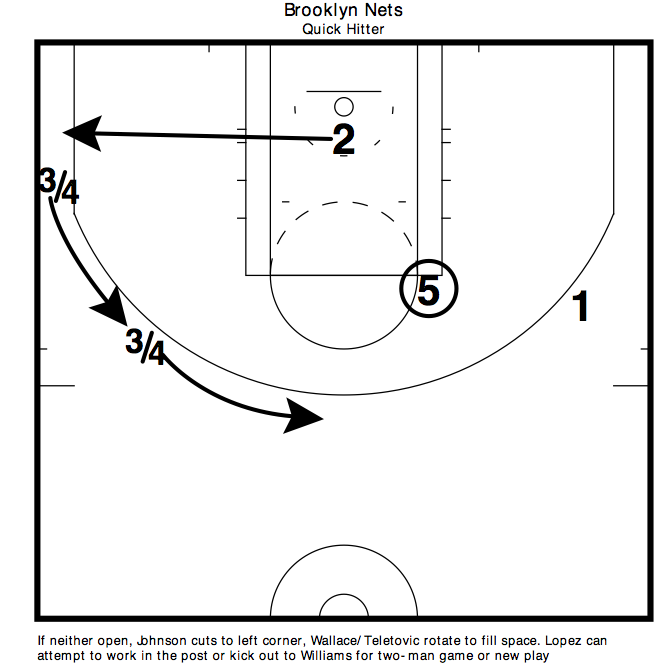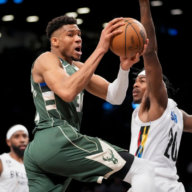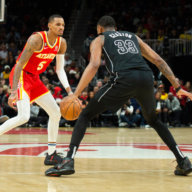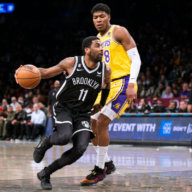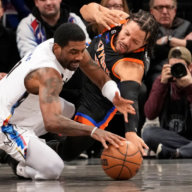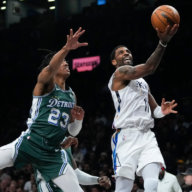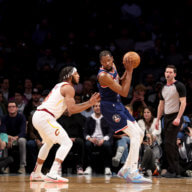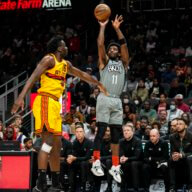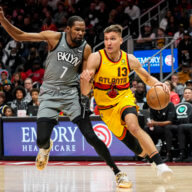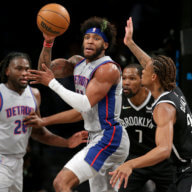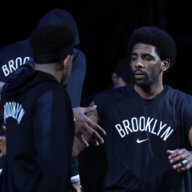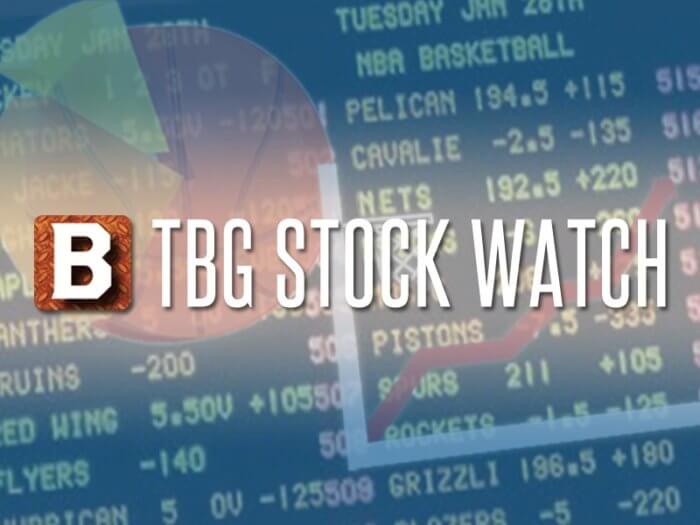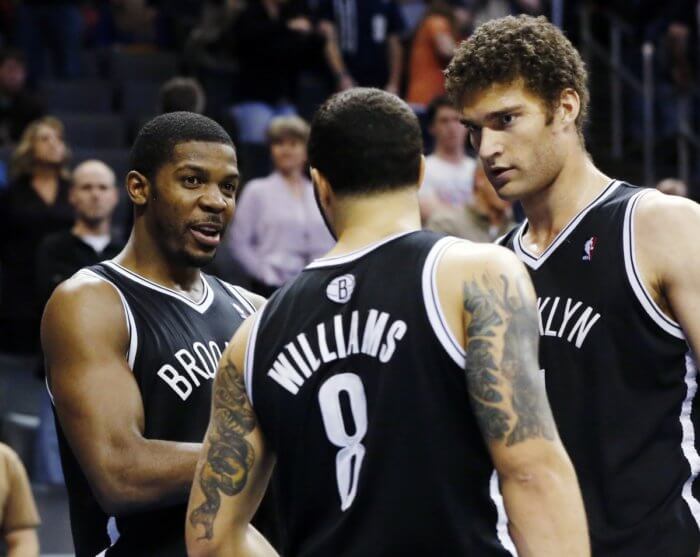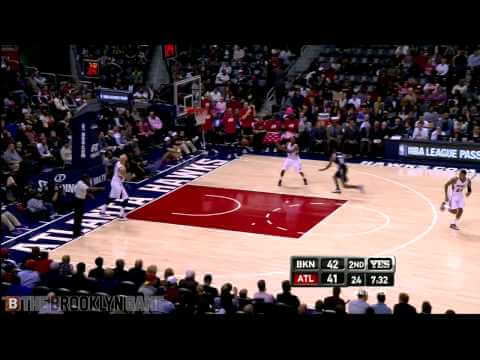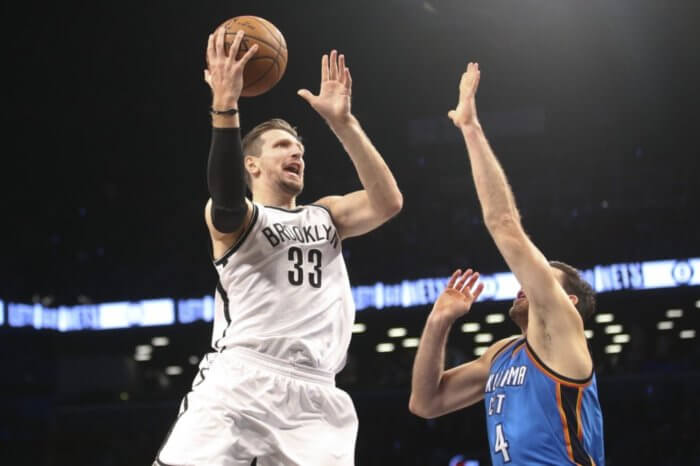Welcome to day two of Joe Johnson Week.
Despite Joe Johnson’s reputation as an isolationist, Atlanta’s success on offense wasn’t born from the one-man game. When most successful, the Hawks relied on spacing, deftly balancing the inside and outside. Josh Smith, perhaps most known for his defense and athleticism, is an excellent passer for a player of his size and skill, and Smith often found Johnson open through double-teams and broken-down defensive sets.
Smith assisted on 84 of Johnson’s field goals in 2011-12, more than any two of Johnson’s teammates and more than all Atlanta point guards combined. Smith found Johnson often in a variety of ways: hitting Johnson posting up or over the top at the rim from the high post, lurking in a corner after drawing a double-team in the low post, spinning and opening up the corner pass, high-screening and handing the ball off, and more. Here are a few examples:
By this standard, Johnson’s in for a struggle in Brooklyn. Kris Humphries and Brook Lopez have never earned a reputation as passing big men — their career assist percentages combined (15.6%) are just below Smith’s career average alone (15.7%). At his worst, Humphries is an offensive black hole, and Lopez, while not a poor passer, is hardly special for a seven-footer.
However, these Brooklyn Nets really are “all new,” and with rebirth comes the potential for new identities. Humphries must know (or must be taught) that he’s not a primary option anymore; these are not the Nets that allowed Humphries to shoot the second-most field goal attempts on the roster last season. In a perfect world, Humphries could reinvent himself offensively, looking only for cuts to the basket, offensive rebounds, and opportunities to set up spotting-up teammates — teammates like Joe Johnson.
There is hope. There are tons of ways to implement a system reliant on big men passing the ball, but I’d specifically like to look at one play from Atlanta’s playbook the Nets can use that doesn’t require Lopez to be a phenomenal passer, just a willing one. I’m not sure how often the Hawks ran this play last year, but it’s a simple, effective way to get points that the Nets should run early and often with Deron Williams, Joe Johnson, Mirza Teletovic, and Brook Lopez on the floor.
Here’s the flow, thanks to basketball play design program FastDraw:
Joe Johnson dumps the ball to Brook Lopez at the high right post to initiate the action.
Deron Williams curls up from the low post and sets a back-screen on Joe Johnson’s defender. Johnson makes a hard cut towards the rim.
Brook Lopez looks for Joe Johnson at the rim. If Johnson has the look, pass him the ball, easy two. If both defenders drop to stop Johnson on Deron Williams’ screen, Williams may be open on the right wing for a three.
Below are two examples of the play in real-time, one from each side:
(Note: In the above frames, Williams starts at the low block and screens up, but in Atlanta’s formation Teague ran side-by-side with Johnson and curls behind him. Despite how I drew it up with FastDraw, I shade more to how Atlanta set up the play because Williams’ defender starts high as opposed to low, leaving more space going towards the rim. But, if Williams starts low, hitting him off the curl for a three-pointer may be more desirable. It’s a minor matter of preference.)
The play is so effective because of Smith’s ability to read the play, but those reads can be taught. Additionally, don’t count out the importance of Deron Williams’ size in the Brooklyn context: he found effective ways of screening seven-footers last year, and his bulk will make a solid screen that much harder for an opposing guard to deke.
I’m an advocate of running this with Teletovic on the floor over Kris Humphries, since Teletovic is a threat from deep and the weak-side big defender can’t abandon his coverage without risking an open three. Humphries isn’t a threat outside of 12 feet, and any defender worth playing can simultaneously guard Joe Johnson cutting to the rim and Humphries within his shooting range. But this play can also be run with Lopez as the weak-side offensive player and Humphries making those reads — again, if he has the discipline to make them.
If neither Johnson nor Williams has a shot opportunity, the play can continue to develop in a couple of ways:
In this first option, Joe Johnson rotates to the left corner, Mirza Teletovic and Gerald Wallace (or whoever the fifth man is) rotate to the center and right wing, and Brook Lopez looks to post-up or get into a two-man set with Deron Williams. If he posts up, he could take another lesson from Smith, who drew double-teams and kicked it to Johnson for open threes a few times last season.
Joe Johnson could also pop out to the right corner to get into a triangle formation with Deron Williams and Brook Lopez. Johnson shot 46.2% from the right corner in 2011-12, so if he maintains that efficiency, the right corner may be the better option regardless of what side the play initiates on.
This could go on for a while; with five scoring options on the court, there’s obviously more ways to mess with this. The tinkering could go on and on until it’s turned into a completely new offensive look. If coach Johnson implements this play as a quick hitter with a few counters, there’s a lot of scoring potential; but it only comes if the Nets’ big men see the entire court, and not just their view of the rim. Joe Johnson is taking a huge step down teammate-wise in that regard, as Smith is a special passer for a player his size, but if Lopez, Humphries, and Teletovic can combine to at least mimic his abilities, they’ll have a huge impact on Joe Johnson’s season and the team’s offensive efficiency.
Statistical support for this story was provided by NBA.com.

